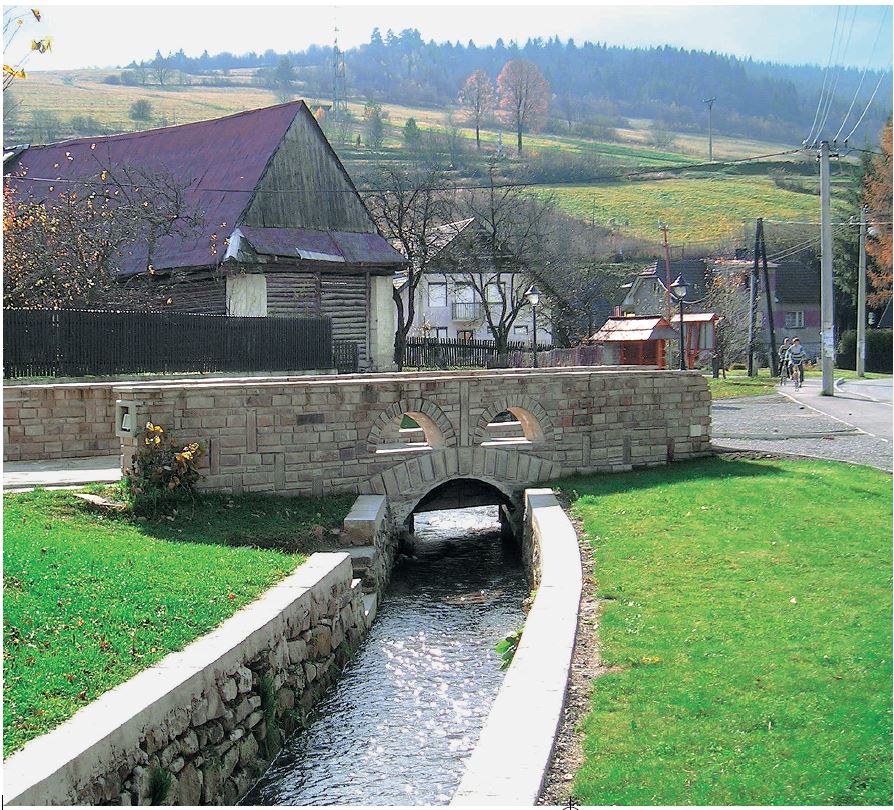Elena Beňušová
Folk stone masonry was only significantly developed in certain regions of Slovakia, around those areas with suitable, easily-processed types of stone. One of these is the Orava region. Orava masonry was focused on two main groups – the production of mill stones, sharpeners and building stone, and for the production of grave stones. By the first half of the seventeenth century, Orava had participated in buildings outside its region by exporting tiles, columns, portals and other building parts. The greatest development in stone production was in the nineteenth century, and the most famous stone producing municipalities were Medzibrodie and Oravský Biely Potok. Stone production was last renewed in Orava in 1959 in the town of Medzibrodie, when Orava Castle was reconstructed, and sandstone tiles were used as floor tiles for the castle hallway interiors. Industrial companies needed large sharpening machines, while small businesses demanded small sharpeners and grave stones. The next group of products of folk masonry production in Orava was the production of roadside columns, crosses, religious sculptures and relieves, grave stones and crosses. These allowed for more decorative and artistic production of masonry products. Older grave stones from the eighteenth century were decorated with figural sculptures. In some villages, only flat objects were produced, mainly grave stones from flat slabs. Stone is still mined in Orava and is used mainly in the construction industry for floors and staircases. The stones are not only used by individuals but also by small businessmen and larger companies. Milan Hudec, a stone mason, repairer and restorer currently works in Oravský Biely Potok. Since the 1980s he has been restoring the works of well-known Orava stone artists, which can be found in many villages throughout the region.
